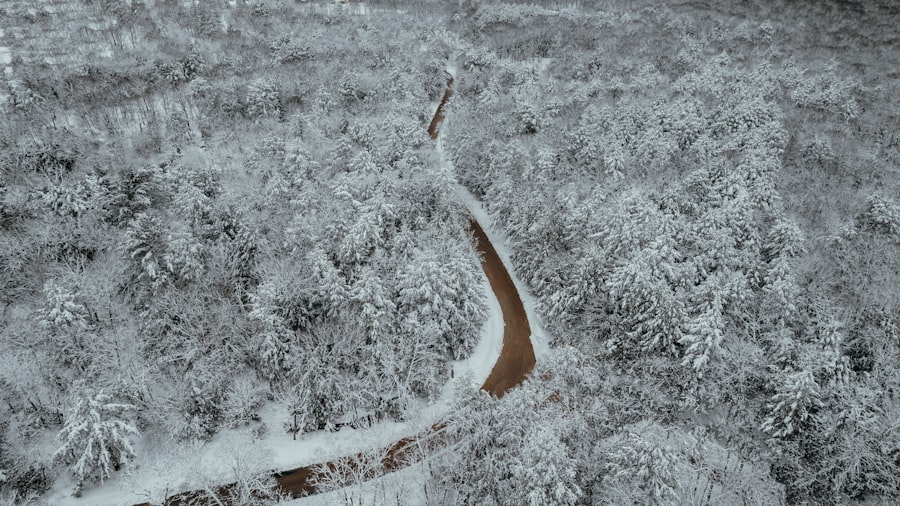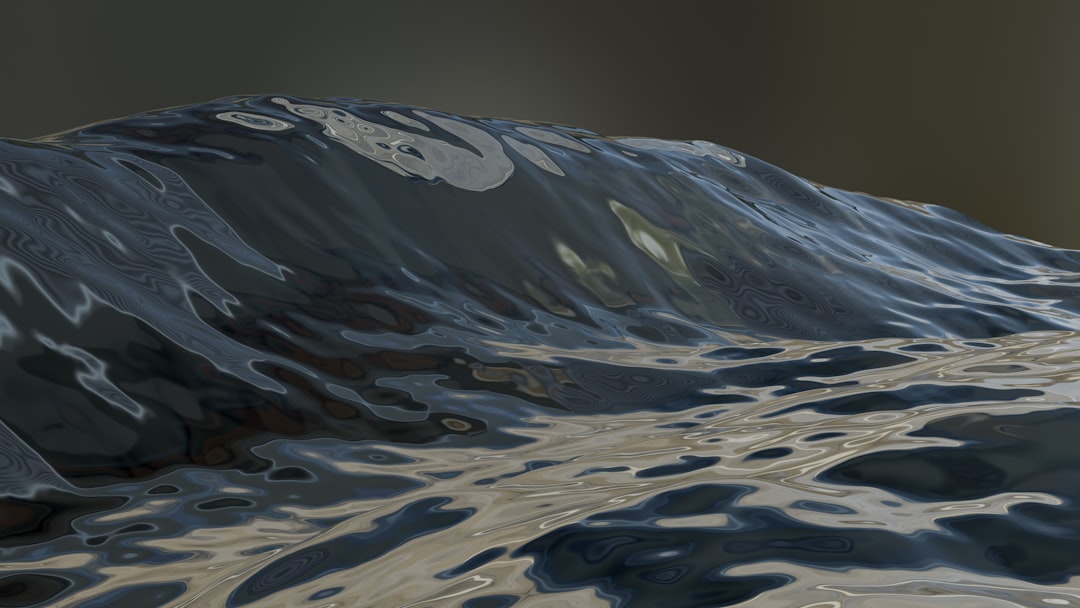The Drake Passage, a body of water that separates South America from Antarctica, is renowned for its tumultuous seas and unpredictable weather. Stretching approximately 600 miles, this passage is often considered one of the most challenging maritime routes in the world. The confluence of the Atlantic and Pacific Oceans creates a unique environment where powerful currents and winds converge, resulting in rough waters that can test even the most seasoned sailors.
The passage is not only a geographical marvel but also a critical ecological zone, rich in marine life and biodiversity. It serves as a vital corridor for migratory species, making it an area of interest for scientists and nature enthusiasts alike. Navigating the Drake Passage is often described as a rite of passage for adventurers seeking to explore the pristine landscapes of Antarctica.
The journey through these waters is marked by dramatic scenery, with towering waves and the occasional sighting of whales or seabirds. However, the beauty of the Drake Passage is accompanied by its notorious reputation for sudden weather changes, which can transform calm seas into a tempest in a matter of hours. Understanding the dynamics of this passage is essential for anyone planning to embark on a journey through these waters, as it prepares them for the challenges that lie ahead.
Key Takeaways
- The Drake Passage is a notoriously rough stretch of water between South America and Antarctica, known for its unpredictable and intense weather conditions.
- Preparing for the journey across the Drake Passage requires careful consideration of the vessel, weather conditions, and personal health and comfort.
- Choosing the right vessel for the crossing involves considering factors such as size, stability, and amenities to ensure a safe and comfortable journey.
- Packing essentials for the crossing should include warm and waterproof clothing, seasickness medication, and personal items for comfort and entertainment.
- Navigating the waves of the Drake Passage requires a combination of skilled seamanship, advanced technology, and careful monitoring of weather and sea conditions.
Preparing for the Journey
Preparation is key when embarking on a journey across the Drake Passage.
This knowledge not only helps in setting realistic expectations but also aids in mental preparation for the crossing.
Many adventurers find it beneficial to connect with others who have made the journey before, gathering insights and tips that can enhance their experience. Engaging with online forums or joining pre-trip seminars can provide valuable information about what to expect and how to prepare effectively. In addition to gathering information, physical preparation is equally important.
Travelers should consider their fitness levels and any health concerns that may arise during the crossing. Engaging in regular exercise leading up to the trip can help build stamina and resilience, which are crucial when facing the challenges of rough seas. Moreover, consulting with a healthcare professional about any necessary vaccinations or medications can ensure that travelers are well-equipped to handle any health-related issues that may arise during their adventure.
Choosing the Right Vessel

Selecting the appropriate vessel for crossing the Drake Passage is a critical decision that can significantly impact the overall experience. Various types of ships are available, ranging from large cruise liners to smaller expedition vessels. Each option comes with its own set of advantages and disadvantages.
Larger ships may offer more amenities and stability in rough waters, while smaller vessels often provide a more intimate experience and greater access to remote areas. Travelers must weigh their priorities—whether they value comfort or adventure—when making this choice. Additionally, it is essential to consider the vessel’s safety features and crew experience.
A well-trained crew familiar with navigating the Drake Passage can make all the difference in ensuring a safe and enjoyable journey.
Ultimately, choosing the right vessel is about finding a balance between comfort, safety, and adventure, ensuring that travelers are well-prepared for the journey ahead.
Packing Essentials for the Crossing
| Item | Quantity | Description |
|---|---|---|
| Backpack | 1 | A sturdy, comfortable backpack for carrying essentials |
| Water Bottle | 1 | A reusable water bottle to stay hydrated |
| Map | 1 | A detailed map of the crossing route |
| Compass | 1 | For navigation in case of getting lost |
| First Aid Kit | 1 | Essential medical supplies for emergencies |
Packing for a journey across the Drake Passage requires careful consideration of both clothing and gear. The weather in this region can be highly unpredictable, with temperatures fluctuating dramatically throughout the day. Layering is key; travelers should pack moisture-wicking base layers, insulating mid-layers, and waterproof outer layers to protect against wind and rain.
Accessories such as hats, gloves, and scarves are also essential for keeping warm during excursions on deck or when disembarking at various points along the Antarctic coast. In addition to clothing, travelers should not overlook other essential items that can enhance their experience. A good pair of binoculars can be invaluable for wildlife watching, allowing adventurers to spot whales, seals, and seabirds from a distance.
A high-quality camera is also recommended for capturing the breathtaking landscapes and unique moments encountered during the journey. Furthermore, packing personal items such as seasickness medication, sunscreen, and reusable water bottles can contribute to a more comfortable and enjoyable crossing.
Navigating the Waves
As travelers embark on their journey through the Drake Passage, they must be prepared to navigate not only the physical waves but also their own emotions and expectations. The experience of crossing these waters can be exhilarating yet daunting, as passengers may encounter rough seas that challenge their sense of stability. Understanding how to read the ocean’s movements and recognizing when to brace for impact can help travelers feel more in control during turbulent moments.
Moreover, embracing the unpredictability of the Drake Passage can lead to unexpected joys. The thrill of witnessing nature’s raw power can be awe-inspiring, transforming moments of discomfort into opportunities for growth and appreciation. Engaging with fellow travelers during these times can foster camaraderie and shared experiences, turning challenges into memorable stories that will be recounted long after the journey has ended.
Coping with Sea Sickness

Sea sickness is a common concern for many travelers crossing the Drake Passage, given its reputation for rough waters. Understanding how to cope with this condition is crucial for ensuring an enjoyable experience. Many individuals find that taking preventative measures before boarding—such as using over-the-counter medications or natural remedies—can help mitigate symptoms.
Additionally, choosing a cabin located in the middle of the ship can reduce motion sensitivity, providing a more stable environment. During the crossing, it is essential to listen to one’s body and take breaks as needed. Staying hydrated and consuming light snacks can help alleviate nausea while providing energy for activities on board.
Engaging in relaxation techniques such as deep breathing or meditation can also be beneficial in managing anxiety related to sea sickness. Ultimately, being proactive about coping strategies can empower travelers to enjoy their journey despite any discomfort they may encounter.
Safety Measures on Board
Safety should always be a top priority when embarking on an adventure across the Drake Passage. Before setting sail, travelers should familiarize themselves with the safety protocols established by their vessel’s crew. This includes understanding emergency procedures, knowing where life jackets are located, and participating in safety drills if offered.
Being informed about these measures not only enhances personal safety but also contributes to a collective sense of security among passengers. Additionally, travelers should remain vigilant during their journey by adhering to guidelines provided by crew members. This includes being cautious when moving around the ship during rough seas and avoiding areas that may pose risks during inclement weather.
By prioritizing safety and following established protocols, travelers can focus on enjoying their adventure while minimizing potential hazards.
Adapting to the Conditions
Adapting to the conditions encountered during a crossing of the Drake Passage is essential for maximizing enjoyment and comfort. The ability to remain flexible in response to changing weather patterns or sea states can significantly enhance one’s experience. Travelers should approach each day with an open mind, ready to embrace whatever challenges or surprises may arise.
Moreover, engaging with crew members and fellow passengers can provide valuable insights into how best to adapt to varying conditions. Sharing experiences and tips can foster a sense of community among travelers while creating opportunities for learning and growth. By cultivating an adaptable mindset, individuals can transform potential frustrations into memorable moments that enrich their journey across this remarkable passage.
Finding Comfort in Uncomfortable Situations
The Drake Passage is known for its unpredictable nature, which often leads to uncomfortable situations for travelers. However, finding comfort amidst discomfort is an essential skill that can enhance one’s overall experience. Embracing mindfulness techniques—such as focusing on breathing or practicing gratitude—can help individuals remain grounded during challenging moments at sea.
Additionally, creating a sense of routine on board can provide stability amid uncertainty. Whether it’s enjoying morning coffee on deck or participating in evening briefings with crew members, establishing familiar practices can foster a sense of normalcy during turbulent times. By actively seeking comfort in discomfort, travelers can cultivate resilience and appreciation for their unique adventure across one of the world’s most formidable maritime routes.
Making the Most of the Experience
To truly make the most of a journey across the Drake Passage, travelers should embrace every opportunity for exploration and connection. Engaging in onboard activities—such as lectures about Antarctic wildlife or photography workshops—can enrich one’s understanding of this remarkable region while fostering connections with fellow adventurers. Additionally, taking advantage of excursions at various ports allows travelers to immerse themselves in the breathtaking landscapes and unique ecosystems that define Antarctica.
Moreover, maintaining an adventurous spirit throughout the journey can lead to unexpected discoveries and memorable experiences. Whether it’s participating in impromptu dance parties on board or sharing stories around a communal table during meals, embracing spontaneity can create lasting bonds among passengers while enhancing individual enjoyment of the trip.
Reflecting on the Achievement
Completing a crossing of the Drake Passage is not just about reaching a destination; it is an achievement worthy of reflection and celebration. Upon arrival in Antarctica, travelers often find themselves filled with a sense of accomplishment and awe at having navigated one of nature’s most challenging environments. Taking time to reflect on personal growth during this journey—whether through overcoming fears or embracing new experiences—can deepen one’s appreciation for both the adventure itself and its lasting impact.
Sharing stories with fellow travelers upon completion of the crossing can further enhance this reflective process. Recounting shared experiences fosters connections that transcend individual journeys while creating a collective narrative that celebrates resilience and exploration. Ultimately, reflecting on this achievement allows travelers to carry forward lessons learned from their time in the Drake Passage into future adventures—reminding them that every challenge faced is an opportunity for growth and discovery.
In exploring the treacherous waters of the Drake Passage, one cannot help but be captivated by the formidable waves, known as “olas” in Spanish, that challenge even the most seasoned sailors. These waves are a testament to the raw power and beauty of nature, making the Drake Passage a legendary route for maritime adventurers. For those interested in learning more about the geographical and historical significance of this region, a related article can be found on MyGeoQuest. This article delves into the unique characteristics of the Drake Passage and its impact on global ocean currents. To read more, visit the article on MyGeoQuest.
WATCH NOW! Drake Passage: Earth’s Deadliest Waters Revealed
FAQs
What is the Drake Passage?
The Drake Passage is the body of water between the southern tip of South America and the northern tip of the Antarctic Peninsula. It is known for its rough seas and challenging sailing conditions.
What are “olas” in the Drake Passage?
“Olas” is the Spanish word for waves. In the context of the Drake Passage, “olas” refers to the large and powerful waves that are characteristic of the area due to the strong winds and currents.
Why are the waves in the Drake Passage so large?
The waves in the Drake Passage are particularly large due to the strong westerly winds and the lack of any significant landmass to break up the waves. The combination of these factors leads to the development of powerful and often treacherous waves.
Are there any dangers associated with the olas in the Drake Passage?
Yes, the large waves in the Drake Passage can pose a significant danger to ships and other vessels navigating the area. The rough seas and strong winds can make sailing conditions challenging and potentially hazardous.
Are there any measures taken to mitigate the dangers of the olas in the Drake Passage?
Ships and vessels that traverse the Drake Passage often take precautions to minimize the impact of the large waves. This can include careful route planning, using larger and more stable vessels, and having experienced crew members who are familiar with the conditions in the area.
